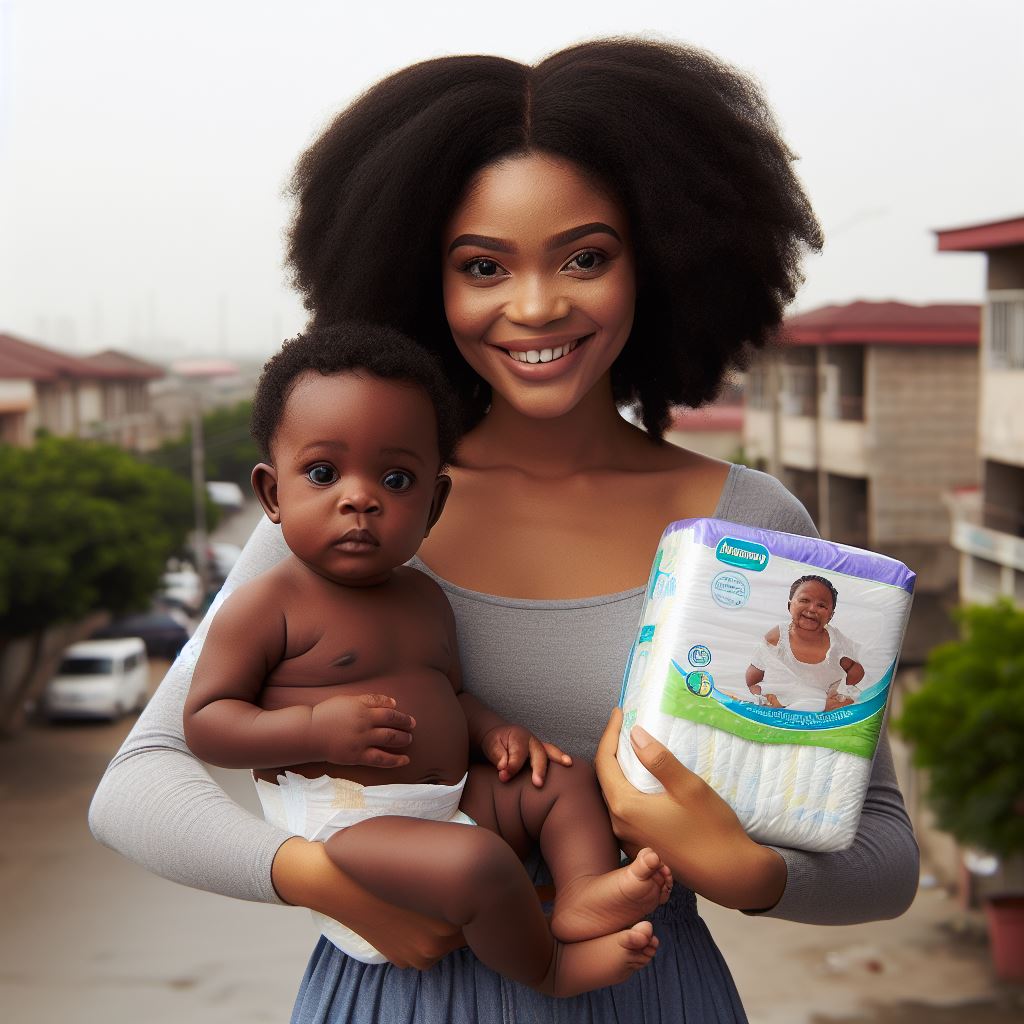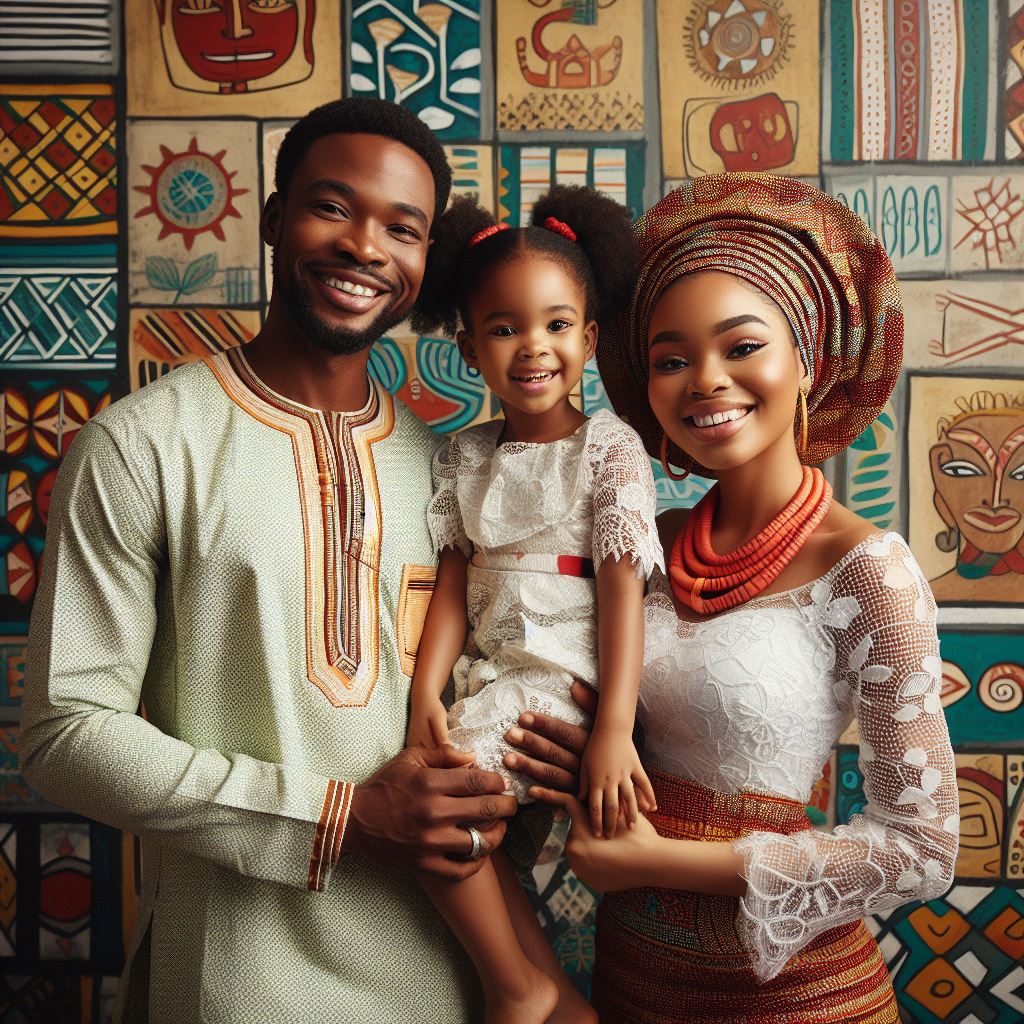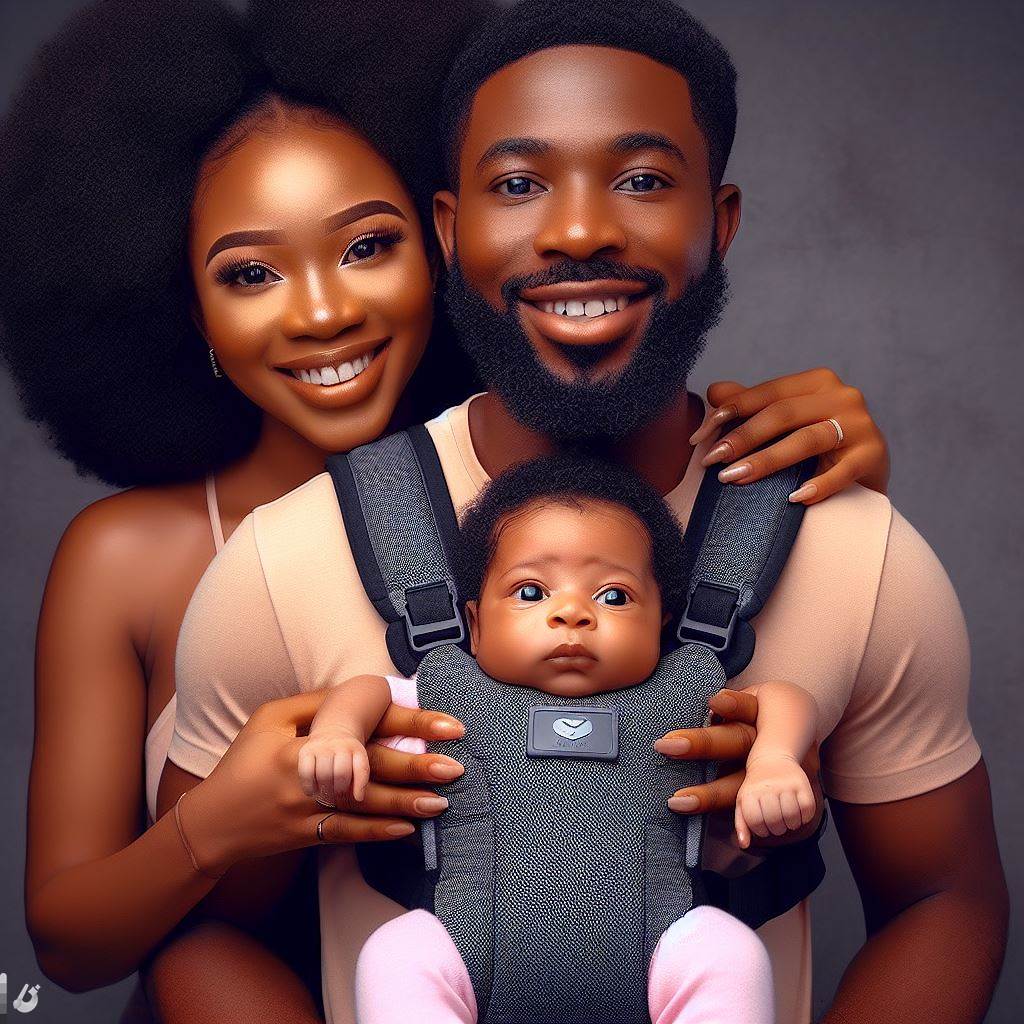Introduction
In this blog post, we will explore Baby Gear Safety Tips for Parents.
A. Importance of Baby Gear Safety
Ensuring your baby’s safety is paramount—proper gear safeguards against potential hazards.
Gear encompasses cribs, car seats, strollers, and more—each critical for your baby’s well-being.
Manufacturers adhere to safety standards, yet knowing how to choose the right gear remains crucial.
B. Purpose of the Blog Post
This blog aims to guide parents through selecting baby gear with a safety-first approach.
Understanding the significance of appropriate gear and its impact on your baby’s safety.
Gear can be overwhelming; this post intends to simplify the selection process.
Providing insights, tips, and considerations empowers parents to make informed decisions.
Ultimately, the goal is to prioritize safety without compromising on comfort or functionality.
Researching Baby Gear
A crucial aspect of preparing for the arrival of a baby is researching and selecting the right baby gear.
From cribs to strollers, there are a plethora of options available in the market.
To ensure the safety and comfort of your little one, consider the following factors when researching baby gear.
A. Understanding different types of baby gear
Before making any purchases, it is essential to familiarize yourself with the different types of baby gear available.
This will help you make informed decisions and choose the most suitable options for your baby.
Some common types of baby gear include:
Parenting Made Just for You
Get personalized Parenting Solutions tailored to your child’s needs. Transform your parenting journey with expert guidance in 1-3 days.
Get Started- Cribs: Provide a safe sleeping environment for your baby.
- Strollers: Allow for easy transportation and come in various designs.
- Car seats: Essential for ensuring your baby’s safety while traveling in a vehicle.
- High chairs: Provide a secure place for feeding your baby.
- Baby carriers: Allow for hands-free bonding and carrying your baby.
- Playpens: Create a safe space for your baby to play and explore.
By understanding the different types of baby gear, you can prioritize which items are necessary for your baby’s well-being.
B. Identifying the essential baby gear items based on the baby’s age and needs
The needs of a newborn differ from those of a toddler.
As your baby grows, their requirements change, and so does the baby gear you’ll need.
Take the following factors into account when identifying essential baby gear:
- Age: Consider whether the item is suitable for a newborn, an infant, or a toddler.
- Needs: Evaluate your baby’s specific needs, such as sleeping, feeding, and mobility.
- Lifestyle: Consider your family’s lifestyle and daily routines to determine the most useful items.
For example, a newborn may require a crib, a car seat, a stroller, a baby carrier, and bottles for feeding.
On the other hand, a toddler may benefit from a high chair and playpen for safe playtime.
C. The significance of selecting age-appropriate and developmentally suitable baby gear
Choosing age-appropriate and developmentally suitable baby gear is crucial to ensure your baby’s safety and promote their growth and development.
Consider the following points when making your selections:
- Safety: Ensure that the baby gear meets safety standards and has appropriate features for your baby’s age.
- Ergonomics: Look for items that provide proper support and align with your baby’s physical development.
- Growth: Opt for gear that can accommodate your baby’s growth to save both time and money.
Keep in mind that what works for one baby may not work for another, so select gear based on your baby’s unique needs and characteristics.
In essence, researching baby gear is an essential step in preparing for your little one’s arrival.
By understanding the different types, identifying essential items, and selecting age-appropriate gear, you can ensure your baby’s safety and comfort.
Remember, thorough research and consideration will lead to informed decisions and a happy baby!
Read: Twin Education: Early Learning Steps
Safety Standards and Certifications
When it comes to choosing baby gear, safety should always be a top priority for parents.
Unveil the Perfect Name that Tells Your Family's Story
Let us help you find a name that embodies your family's values, traditions, and dreams. Our personalized consultation weaves cultural insights to create a name that's uniquely yours.
Get StartedIt is important to ensure that the products you purchase meet the necessary safety guidelines and certifications.
In this section, we will provide an overview of safety certifications to consider, explain safety standards for baby gear, and emphasize the importance of purchasing gear that adheres to these guidelines.
A. Overview of Safety Certifications to Consider
- Look for the JPMA (Juvenile Products Manufacturers Association) certification on baby gear.
- Check for the ASTM (American Society for Testing and Materials) certification, which ensures product safety.
- Consider products with the CPSC (Consumer Product Safety Commission) certification to guarantee safety.
These certifications indicate that the product has undergone rigorous testing to meet specific safety standards.
They provide parents with peace of mind, knowing that the gear has been thoroughly evaluated for potential hazards.
Always look for these certifications before making a purchase.
B. Safety Standards for Baby Gear
Baby gear must adhere to certain safety standards to mitigate potential risks.
Some important safety standards to watch out for include:
- Strollers: Ensure the gear has passed stability tests and comes with a secure harness system.
- Cribs: Look for products that meet CPSC guidelines, have spaced slats, and include adjustable mattress heights.
- High Chairs: Verify that the chair features a sturdy base, secure straps, and a five-point harness for baby’s safety.
- Car Seats: Make sure car seats comply with regulations and meet government safety standards.
These safety standards not only minimize the chances of accidents but also provide optimal protection for your little one.
Make sure to research and understand the safety standards for each type of baby gear you plan to purchase.
C. Importance of Purchasing Baby Gear that Meets Safety Guidelines
Purchasing baby gear that meets safety guidelines is crucial for your child’s well-being.
Here are some reasons why:
- Accident Prevention: Following safety guidelines helps prevent accidents and potential injuries to your baby.
- Product Reliability: Gear that adheres to safety guidelines is built to withstand rigorous usage and provides long-term reliability.
- Piece of Mind: Knowing that your baby is using gear that meets safety guidelines gives you peace of mind.
- Legal Compliance: Purchasing gear that meets safety guidelines ensures you are in compliance with legal requirements and regulations.
Always prioritize your baby’s safety when choosing gear, as it directly affects their well-being and overall development.
By considering safety certifications, understanding safety standards for various baby gear, and recognizing the importance of purchasing gear that meets safety guidelines, you can make informed decisions to safeguard your little one during their early stages of growth and development.
Read: Baby Carriers: A Nigerian Parent’s Guide
Considering Product Recalls and Reviews
Choosing baby gear is a significant responsibility for parents, and ensuring the safety of your little one should be a top priority.
Apart from considering the features and functionality of baby products, it is essential to also pay attention to product recalls and customer reviews.
A. Importance of Checking for Product Recalls
Product recalls play a crucial role in protecting your baby from potential harm.
By checking recall lists regularly, you can stay informed about any safety issues associated with specific products.
This allows you to take immediate action and either have the item repaired or replaced, or find a safer alternative.
Neglecting to check for recalls could result in using unsafe or faulty gear, placing your baby at unnecessary risk.
B. Researching Customer Reviews and Ratings for Baby Gear
Additionally, researching customer reviews and ratings can provide valuable insights into the quality and safety of baby gear.
Reviews allow you to benefit from the experiences of other parents who have used the products.
They often mention any problems or concerns they encountered, giving you a clearer picture of the item’s pros and cons.
Real-life testimonials can be more reliable than product descriptions, as they provide firsthand information about a product’s performance and durability.
C. Tips for Finding Reliable Sources of Information on Product Recalls and Reviews
When searching for reliable sources of information on product recalls and reviews, consider visiting official government websites.
These sites often provide comprehensive lists of recalls and safety alerts.
Subscribing to email notifications from consumer protection agencies can ensure you receive immediate recall updates.
In addition, explore reputable parenting websites and online forums where fellow parents share their experiences and recommendations.
These platforms can be great sources of honest and unbiased reviews.
It is also worth consulting with pediatricians, child safety experts, and experienced parents in your community for their advice and opinions.
When reading reviews, look for platforms that authenticate and verify the feedback from customers, ensuring the credibility of the information.
Consider both the positive and negative aspects mentioned in the reviews to make an informed decision about the baby gear you choose.
Remember, taking the time to consider product recalls and customer reviews can help you select the safest and most reliable baby gear for your precious little one.
Stay informed, prioritize safety, and make choices that provide peace of mind for you and your growing family.
Examining the Product Features
When it comes to choosing baby gear for your little one, there are several important factors to consider.
Examining the product features is a crucial step in ensuring the safety and suitability of the baby gear you are interested in purchasing.
Here are some key aspects to look into:
A. Checking the stability and durability of baby gear
- Ensure that the baby gear you are considering is stable and sturdy.
- Avoid any products that seem flimsy or have a tendency to wobble.
- Choose gear made from high-quality materials that can withstand regular use and support your baby’s weight.
- Inspect the joints, fasteners, and connections of the gear to ensure they are secure and well-made.
B. Evaluating the materials used in baby gear construction
- Opt for baby gear made from non-toxic materials that are free from harmful chemicals.
- Check if the gear has been tested for compliance with safety standards.
- Make sure the materials used are easy to clean and maintain.
- Consider the weather conditions in your area and choose gear suitable for different climates.
C. Assessing the ease of use and functionality of baby gear
- Test the gear to see if it is easy to assemble, adjust, and operate.
- Make sure the gear has clear instructions and does not require complex setup.
- Consider if the gear can accommodate your baby’s growth and adapt to their changing needs.
- Check if the gear is portable and easy to transport, especially if you’ll be traveling frequently with your baby.
- Look for additional features that enhance safety and convenience, such as secure harnesses, adjustable straps, or built-in storage.
By thoroughly examining the product features of baby gear, you can make an informed decision and choose items that prioritize your baby’s safety and comfort.
Remember, it’s essential to always follow the manufacturer’s guidelines and regularly check for any recalls or safety updates related to the gear you purchase.
Your baby’s well-being is worth investing the time and effort into selecting the right gear for them.
Read: Nigerian Guide to Baby Strollers & Prams

Ensuring Proper Installation and Setup
Installing baby gear properly is essential to ensure the safety of your little one.
Whether it’s a car seat, crib, or stroller, following the correct installation guidelines and safety instructions is critical.
In this section, we will discuss the importance of reading the instruction manual carefully, following installation guidelines, and enlisting professional help if needed.
A. Reading the instruction manual carefully
The instruction manual is a valuable resource that provides detailed information on how to install and set up your baby gear correctly.
This includes step-by-step instructions, diagrams, and safety precautions. Before starting the installation process, take the time to thoroughly read the manual.
By doing so, you will familiarize yourself with the product and gain a better understanding of the installation process.
B. Following installation guidelines and safety instructions
Once you have read the instruction manual, it is crucial to follow the installation guidelines and safety instructions provided.
These guidelines are designed to ensure that the baby gear is installed correctly and securely.
Pay close attention to the recommended weight limits, age restrictions, and proper positioning.
Failure to follow these guidelines can compromise the safety of your baby and increase the risk of accidents or injuries.
C. Enlisting professional help if needed
Installing certain baby gear items, such as car seats, may require a high level of expertise.
If you find yourself unsure or uncomfortable with the installation process, it is always best to seek professional help.
Many communities have certified technicians who can assist you in properly installing your baby gear.
They have the knowledge and experience to ensure that every step is done correctly, minimizing the risk of any potential issues.
In fact, proper installation and setup of baby gear is of utmost importance to ensure the safety of your child.
By reading the instruction manual carefully and following the installation guidelines and safety instructions, you can greatly reduce the risk of accidents or injuries.
If you are unsure or uncomfortable with the installation process, do not hesitate to enlist professional help.
Remember, the safety of your precious little one should always be your top priority.
Read: Travel Tips with Twin Toddlers in Tow
Inspecting Baby Gear Regularly
When it comes to ensuring the safety of your baby, inspecting baby gear regularly is of utmost importance.
A. Importance of routine inspections
Routine inspections allow parents to identify any potential issues or hazards with their baby gear.
- Regular inspections help ensure that the gear functions properly, reducing the risk of accidents.
- By inspecting baby gear regularly, parents can catch any wear and tear before it becomes a safety concern.
- It’s essential to remember that even the highest quality baby gear can deteriorate over time.
- Children grow quickly, and their weight or size may exceed the gear’s recommended limits.
B. Checking for wear and tear, loose parts, or potential hazards
During routine inspections, parents should carefully examine their baby gear for signs of wear and tear.
- Inspect the fabric for any signs of fraying, tearing, or holes that could pose a safety risk.
- Check all straps, buckles, and fasteners to ensure they are secure and in good working condition.
- Look for any loose parts, such as screws or small components, and tighten or replace them as needed.
- Examine the overall structure of the gear, including the frame, to ensure it is stable and sturdy.
- Check for any potential hazards, such as small parts that could be choking hazards or sharp edges.
C. Replacing or repairing damaged baby gear promptly
If any damage or potential safety hazards are found during inspections, it is crucial to take immediate action.
- For minor issues, such as a loose screw or small tear in fabric, parents should address the problem promptly.
- Follow the manufacturer’s instructions for repair, and if necessary, contact customer service for guidance.
- If the damage is significant or poses a safety risk, it may be necessary to replace the baby gear entirely.
- Remember that compromises on safety should never be made when it comes to your baby’s well-being.
- Discard any damaged gear properly, ensuring it cannot be used by others or pose a risk to children.
In short, inspecting baby gear regularly is a vital part of ensuring your baby’s safety.
Routine inspections help identify any wear and tear, loose parts, or potential hazards that may compromise the gear’s functionality.
Promptly replacing or repairing damaged gear is essential to avoid accidents or injuries. Remember, the safety of your baby should always be your top priority.
Understanding Safe Sleep Practices
In order to ensure the safety of your baby during sleep, it is important to understand and practice safe sleep practices.
This section will provide you with valuable information on choosing baby gear that promotes safe sleep for your little one.
A. Choosing a Safe Crib or Bassinet
- Select a crib or bassinet that meets current safety standards, with sturdy construction and appropriate spacing between slats.
- Ensure that the crib or bassinet has a stable base and secure corners to prevent any potential hazards.
- Check for any recalls or safety concerns related to the chosen crib or bassinet before making a purchase.
B. Using a Firm Mattress and Fitted Sheets
- Always use a firm mattress that fits the crib or bassinet snugly, without any gaps around the edges.
- Avoid using soft mattresses, as they can increase the risk of suffocation or Sudden Infant Death Syndrome (SIDS).
- Use fitted sheets that are specifically designed for the crib or bassinet, ensuring a tight and secure fit.
C. Avoiding Loose Bedding, Pillows, and Crib Bumpers
- Remove all soft bedding, including blankets, comforters, and pillows, from the crib or bassinet.
- Avoid using crib bumpers, as they can pose a suffocation risk and increase the possibility of falls.
- Opt for sleep sacks or wearable blankets instead of loose blankets to keep your baby warm and safe.
By implementing these safe sleep practices, you can create a secure and comfortable sleeping environment for your baby.
Remember, safety should always be the top priority when choosing baby gear or setting up a sleep space.
Traveling Safely with Baby Gear
Traveling with a baby can be a challenging experience, but by taking proper precautions, you can ensure their safety and make the journey more enjoyable for everyone.
Here are some tips for traveling safely with baby gear:
A. Selecting appropriate car seats and strollers
- Choose a car seat that meets the latest safety standards and is appropriate for your baby’s age, weight, and height.
- Research and compare different car seat models to find one that provides the best protection for your little one.
- Consider convertible car seats that can be adjusted as your baby grows to save money in the long run.
- When selecting a stroller, opt for one that is sturdy, lightweight, and easy to maneuver.
- Look for strollers with safety features such as a five-point harness system and a stable base.
B. Proper installation of car seats
- Read the car seat’s instruction manual carefully before attempting to install it.
- Make sure the car seat is securely installed at the appropriate angle and does not move more than an inch in any direction.
- Use the seat belt or LATCH system correctly to fasten the car seat to your vehicle.
- Double-check that the car seat is properly installed by giving it a firm tug at the base and checking for any loose straps or buckles.
C. Being mindful of baby gear when using public transportation or traveling by plane
- If you are using public transportation, consider baby carriers or slings as they offer a hands-free and secure way to transport your baby.
- When traveling by plane, bring a car seat approved for air travel to ensure your baby’s safety during takeoff, landing, and turbulence.
- Check with your airline beforehand to understand their specific rules and regulations regarding baby gear.
- Use a sturdy and dependable stroller that can handle rough terrain or crowded spaces when navigating busy airports or train stations.
D. Some additional tips to keep in mind while traveling
- Pack the essentials: Bring diapers, wipes, extra clothes, blankets, and any necessary medications in your carry-on bag.
- Use travel-sized toiletries and pack them in a clear, resealable bag to comply with airport security regulations.
- Keep important documents, like your baby’s identification and medical records, easily accessible.
- Be mindful of the weather conditions at your destination and pack appropriate clothing and accessories for your baby.
- Schedule regular breaks during long journeys to give your baby a chance to stretch and relax.
- Remember to prioritize your baby’s safety over convenience, even if it means carrying extra gear or taking additional precautions.
By following these safety tips and being prepared, you can ensure a smooth and worry-free travel experience with your baby.
Remember that safety should always be your top priority, and it’s better to be overprepared than underprepared when it comes to your baby’s well-being.
Conclusion
A. Recap of important safety tips for choosing baby gear
- Always check for recalls and safety certifications before purchasing baby gear.
- Ensure that the gear meets the current safety standards and guidelines.
- Inspect for any potential hazards such as loose parts, sharp edges, or small detachable pieces.
- Properly install and secure the gear, following the manufacturer’s instructions.
- Regularly inspect and maintain the gear for any signs of wear and tear.
Choosing safe baby gear is essential to prevent accidents, injuries, and promote the well-being of your child.
By prioritizing baby gear safety, parents can provide a secure environment for their little ones.
Spread the word about baby gear safety by sharing this blog post with other parents.
Together, we can create a safer environment for all our precious babies!




